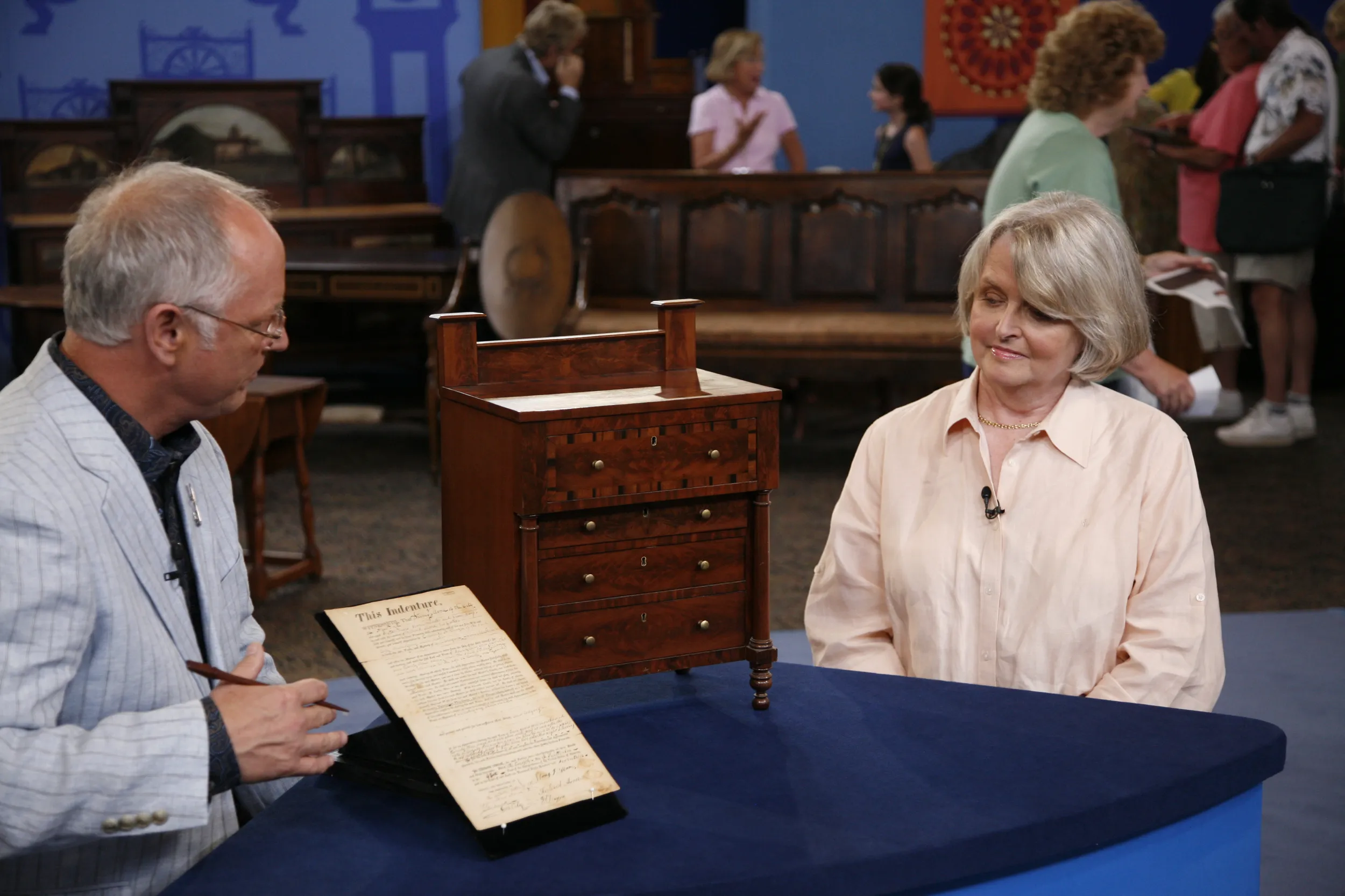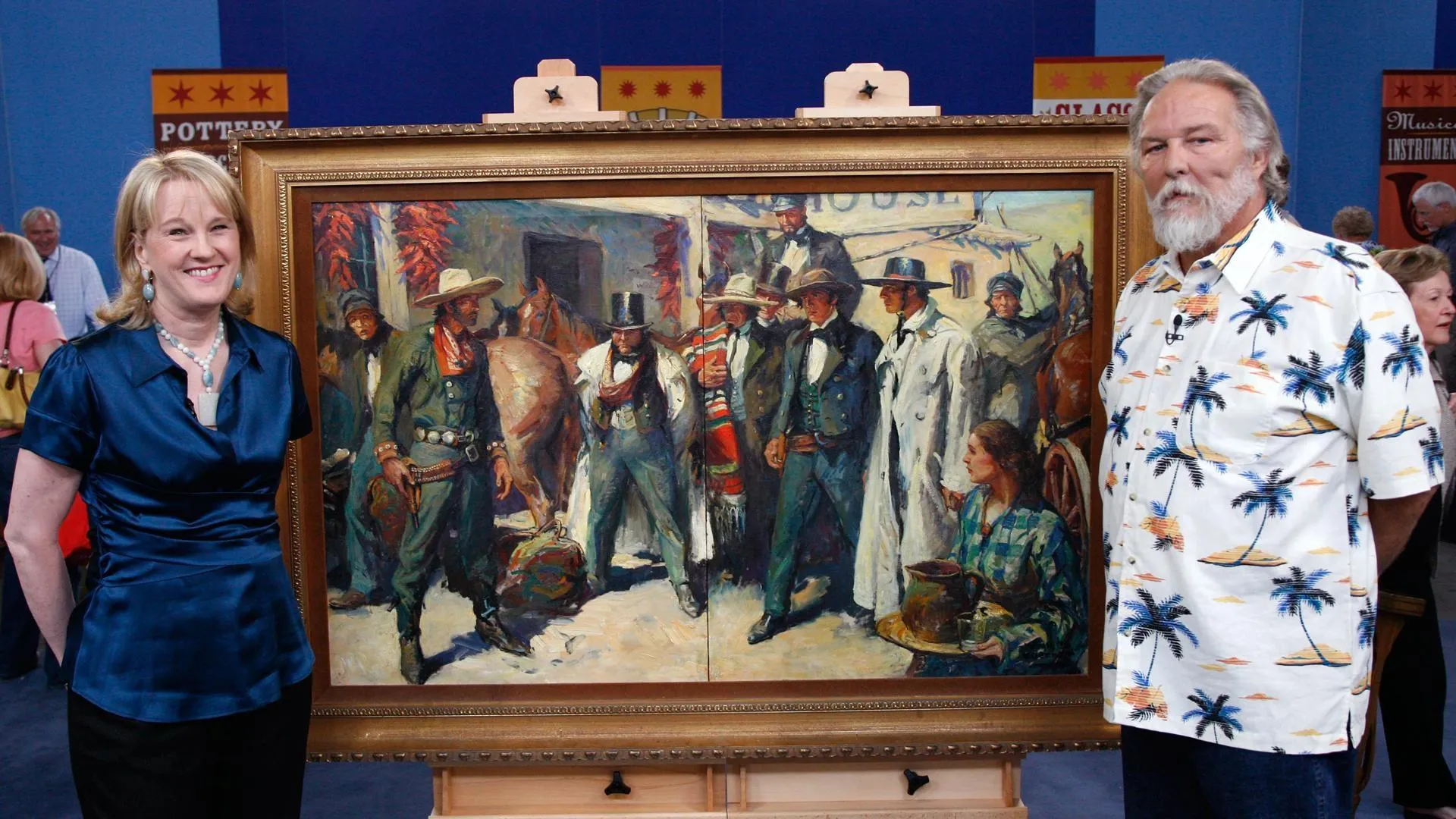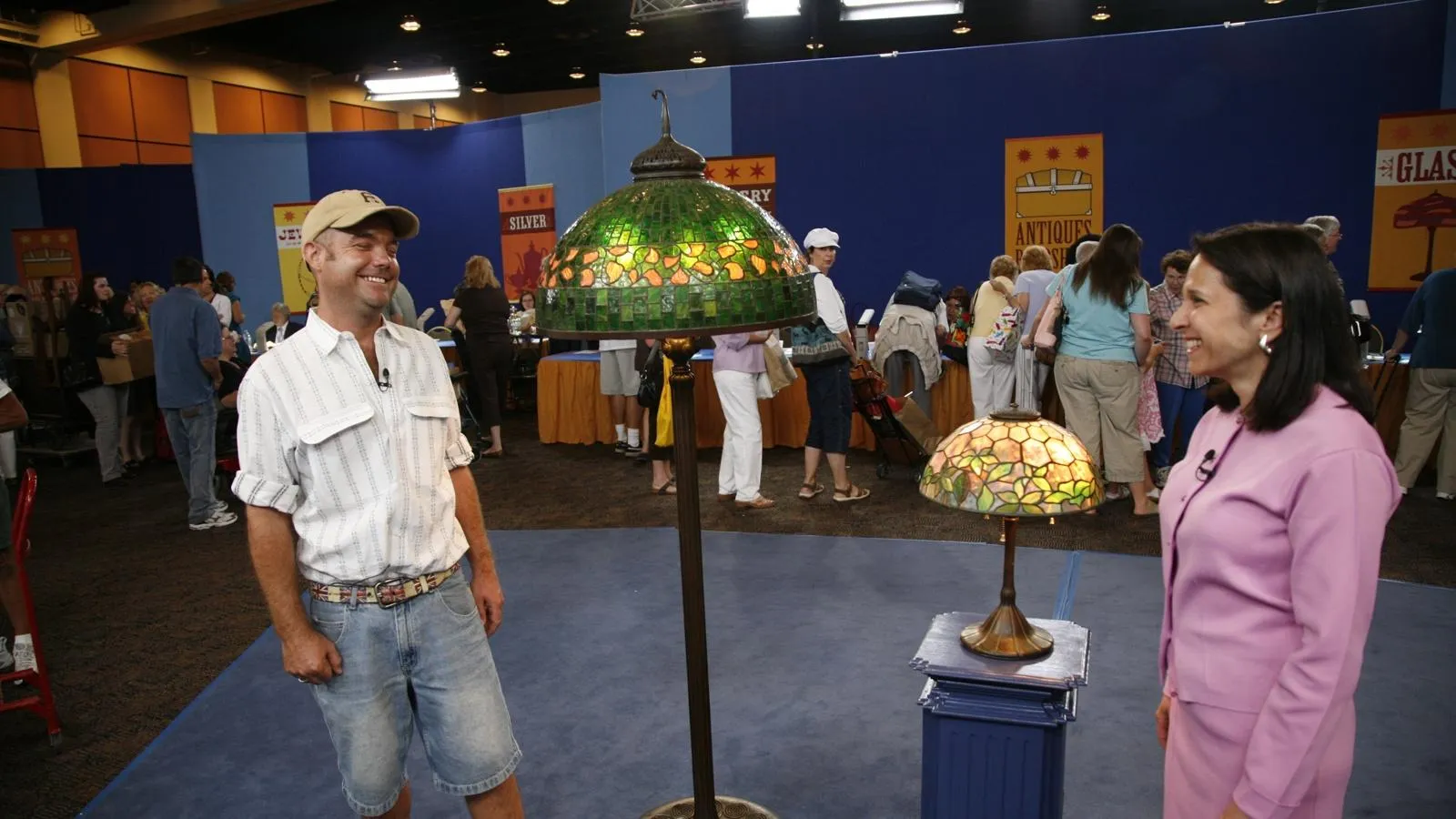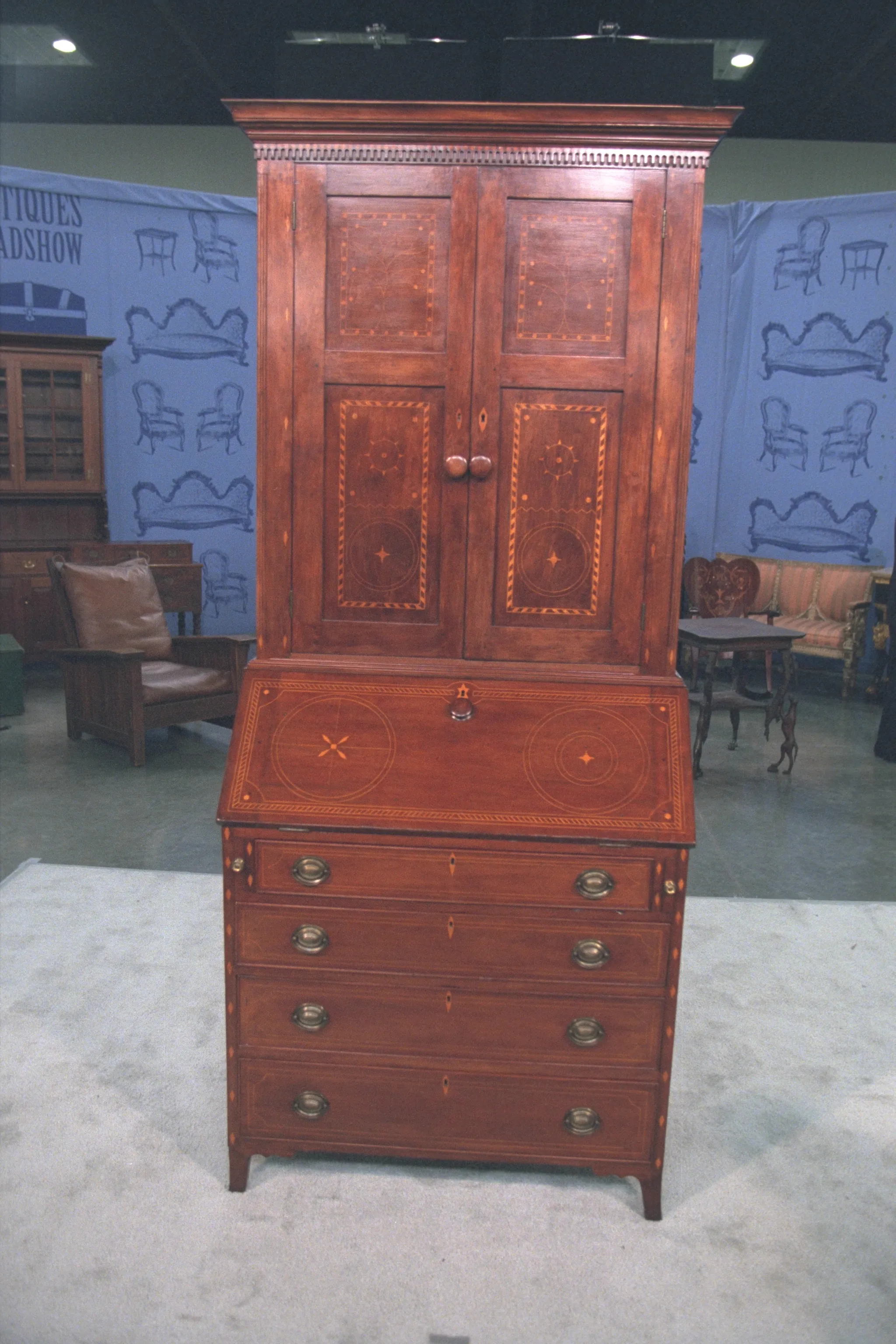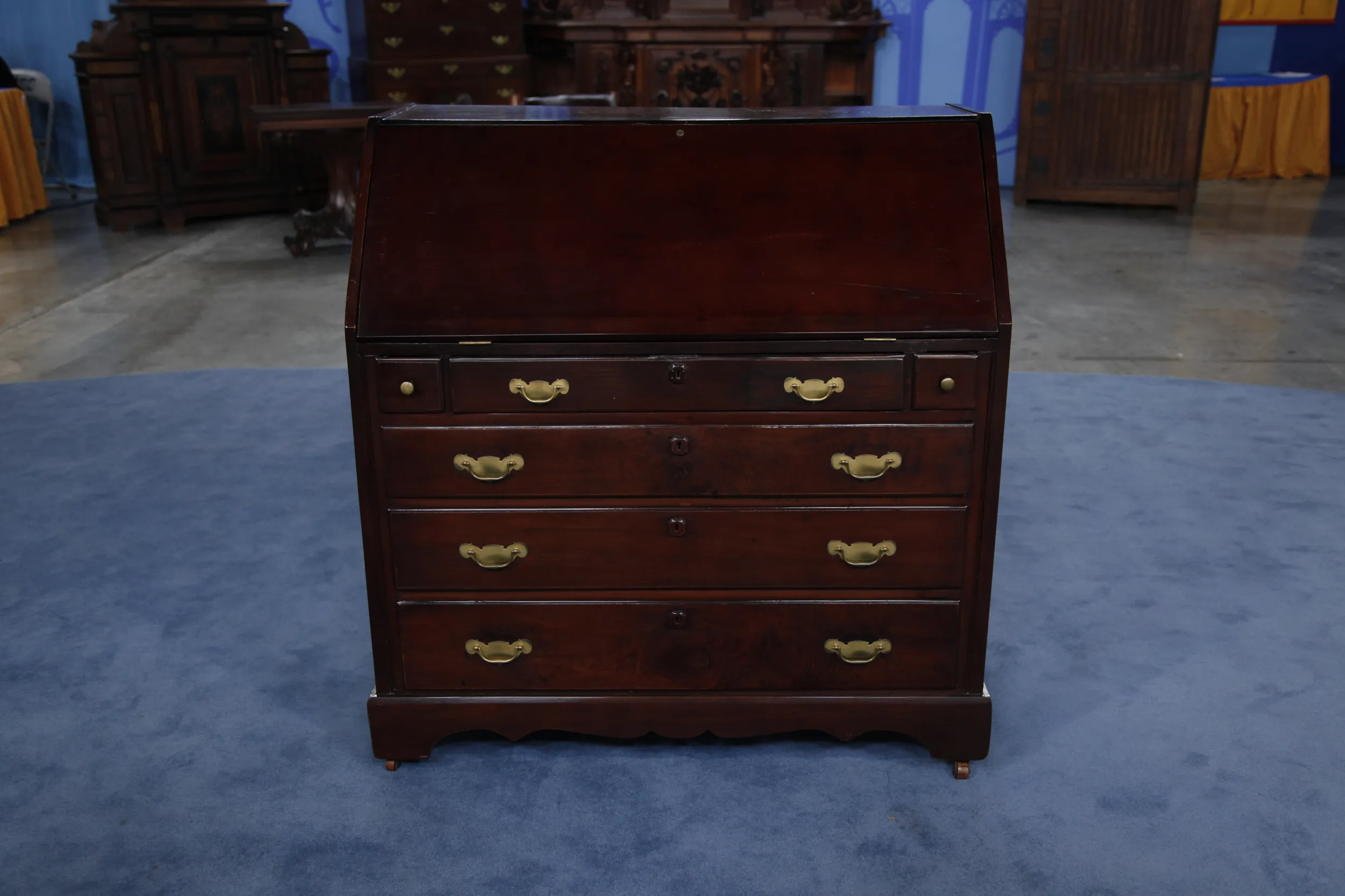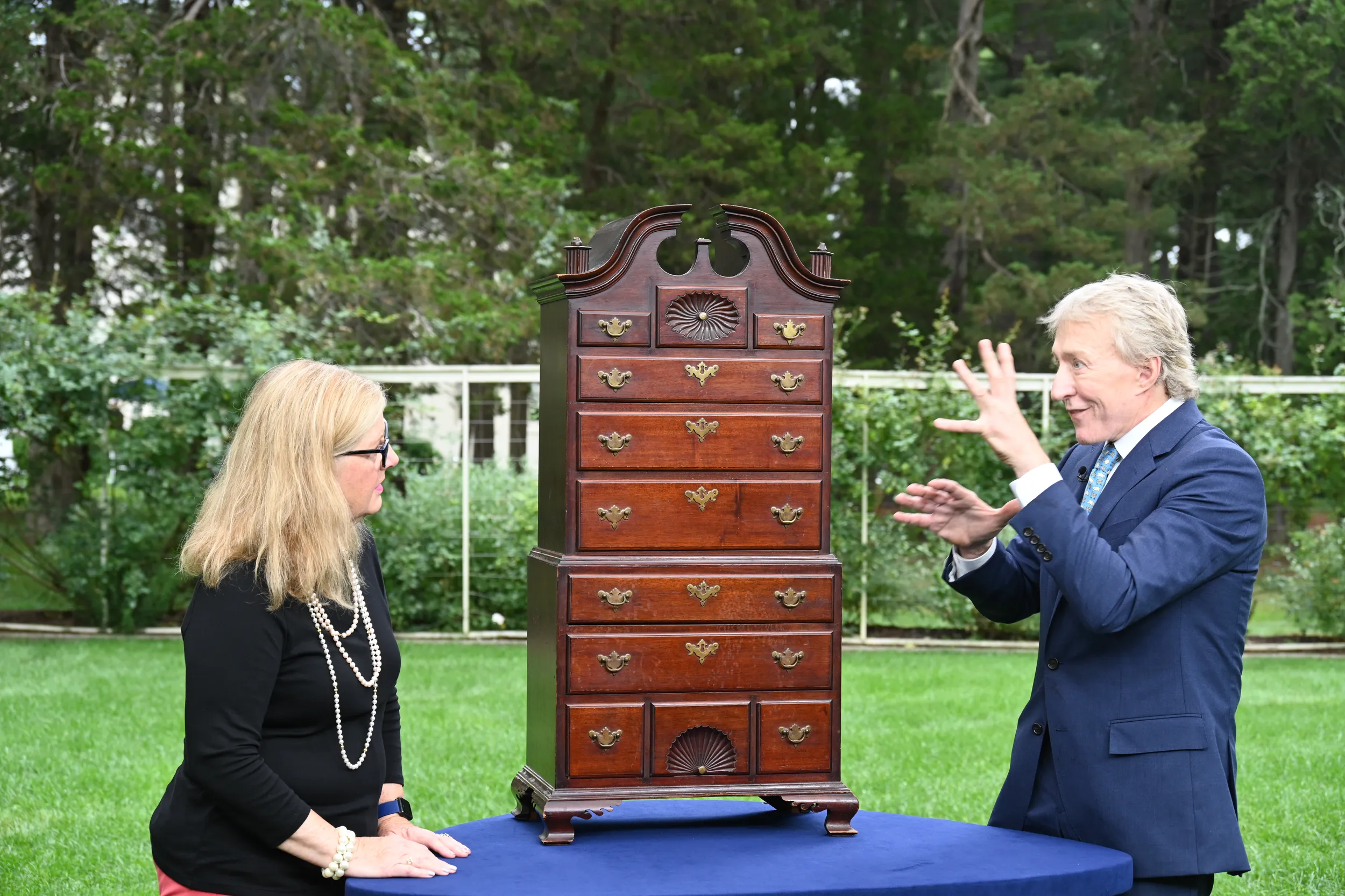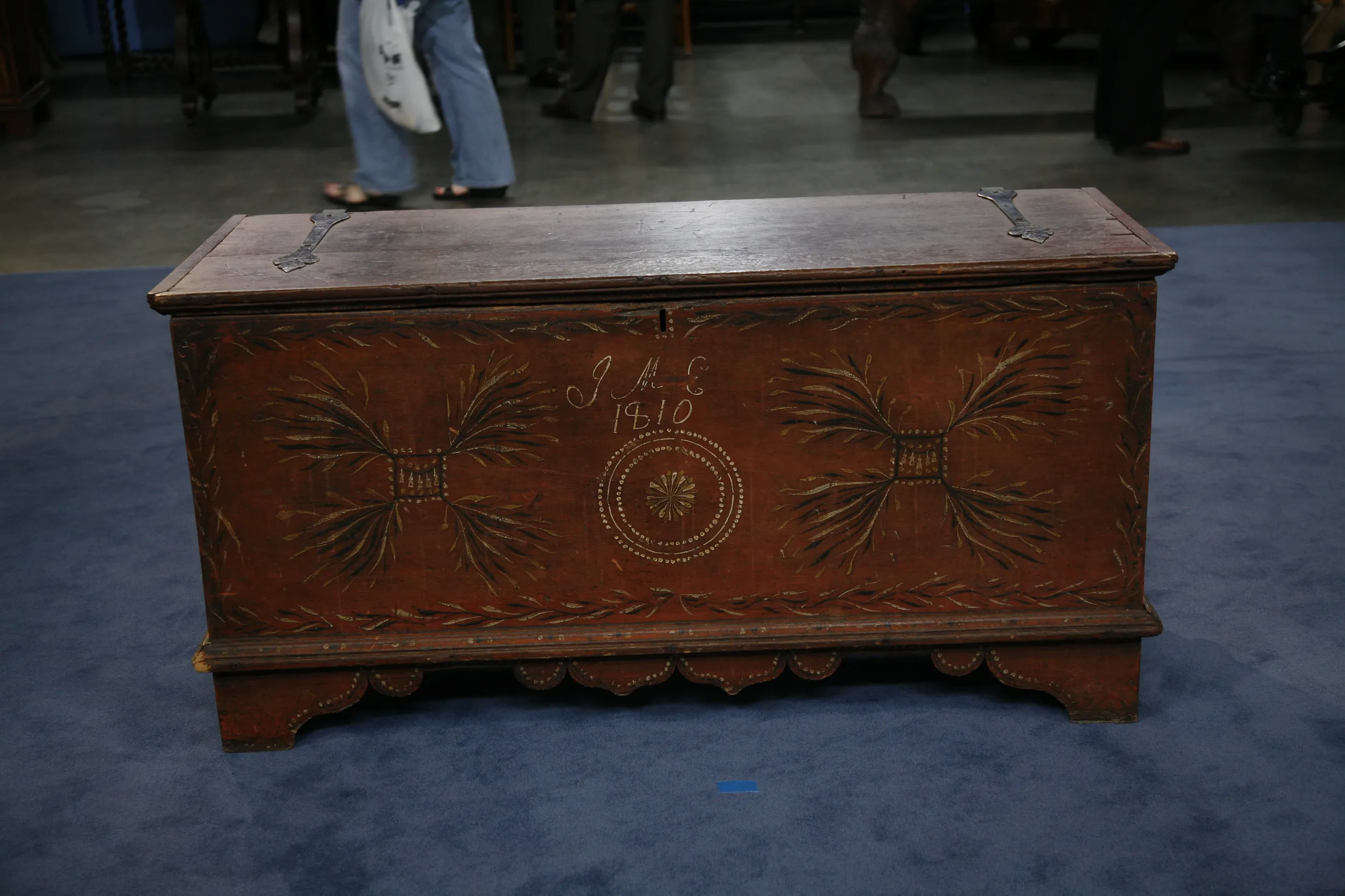GUEST: This is a chest that my grandmother gave to me. It was something that she inherited, and it is supposedly made by my great-great-grandfather in New York City.
APPRAISER: Okay. And this document was part of that also, right?
GUEST: That was part of it, yes. This was a document that she always treasured, because it told about the indenture of her great-grandfather.
APPRAISER: One of the things interesting about people making furniture back in the 18th and 19th century is that when they trained people that worked for them, they actually did indenture them. In this particular indenture, your relative is 16 years old, and he's going to be indentured till he's 21. Each one of the, the apprentice and the master both promised to do certain things for each other. Like, the master is gonna give him $25 a year for clothing. The master doesn't want the apprentice doing anything that he's not supposed to, like going into ale houses, or stealing from him, or selling things or whatever. And when he was finished with this, then he would have been qualified as a cabinet maker. The other thing I want to make a point about in here is that this guy was working in mahogany. And in the 18th and 19th century, if you were talented enough to work in mahogany and make chairs, that meant that you had enough ability to make anything.
GUEST: I didn't realize that.
APPRAISER: And the thing that also makes this so wonderful is that it's so finely executed. He used all this exotic veneer around the drawer front, and it's a perfect little miniature chest, and another way to document this, underneath here in this bottom drawer is the name and the date of your relative. Typically, from this period, which would have been in the Empire period, they used hardwoods, and then they would use veneers over top of it. This is all poplar secondary. And we know that it's New York, because he was apprenticed in New York. Was the family in New York, you think?
GUEST: Yes.
APPRAISER: When he made this?
GUEST: They, they had lived in New York starting in the 1600s.
APPRAISER: Now, this has been refinished and the pulls are replaced.
GUEST: Okay.
APPRAISER: But you know what? It's really a beautiful thing either way.
GUEST: Thank you!
APPRAISER: And I don't think it impacts the value greatly. This has one of those characteristics I call the X factor.
GUEST: Oh! (chuckles) That sounds good!
APPRAISER: You know, there's all these different things that make things valuable, like rarity, condition, and eye appeal. But you know who made it, you know who he made it for, and you have this piece of paper that shows who he trained under, which is even more documentation. So if I were going to insure all of this together, I would probably insure it for about $6,000.
GUEST: Wonderful! Sounds good! My grandmother would love it.
APPRAISE & GUEST: (both laugh)

